As of March 2024 It seems like parts of Dusit Palace, including Vimanmek Teak Mansion, are temporarily closed to the public for renovation. See Section “Is Dusit Palace currently open to the public?” for further information.
The broad alleyways and widespread parks of Bangkok’s Royal Quarter set it apart from the noise and frenzy of many other quarters in the city. A more relaxed vibe seems to dominate this borough and a pleasant half day can be spent exploring the splendid Dusit Palace and checking out the various temples in the area.
Primarily the brainchild of Emperor Rama V., who ruled the country from 1853 to 1910, the appearance of Dusit was inspired by European Capitals the monarch had seen during his diplomatic visits. Some visitors decry the lack of character of this artificially created district but you can’t deny its potential as an antidote to traffic-ridden central Bangkok and I for my part very much enjoyed my half-day stroll through the district.
Plus, the people complaining about Dusit are usually the ones who washed their Pizza down with a bucket of Sangria on Khao San Road the night before. Read on for the best places to see in this pleasant part of town.
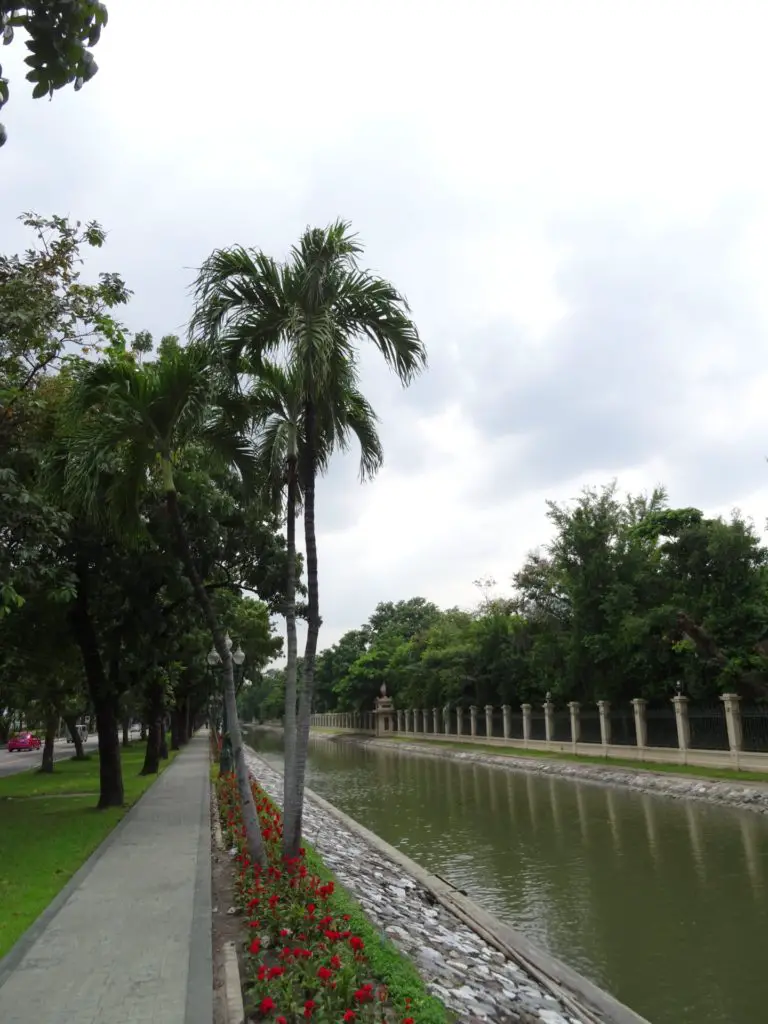
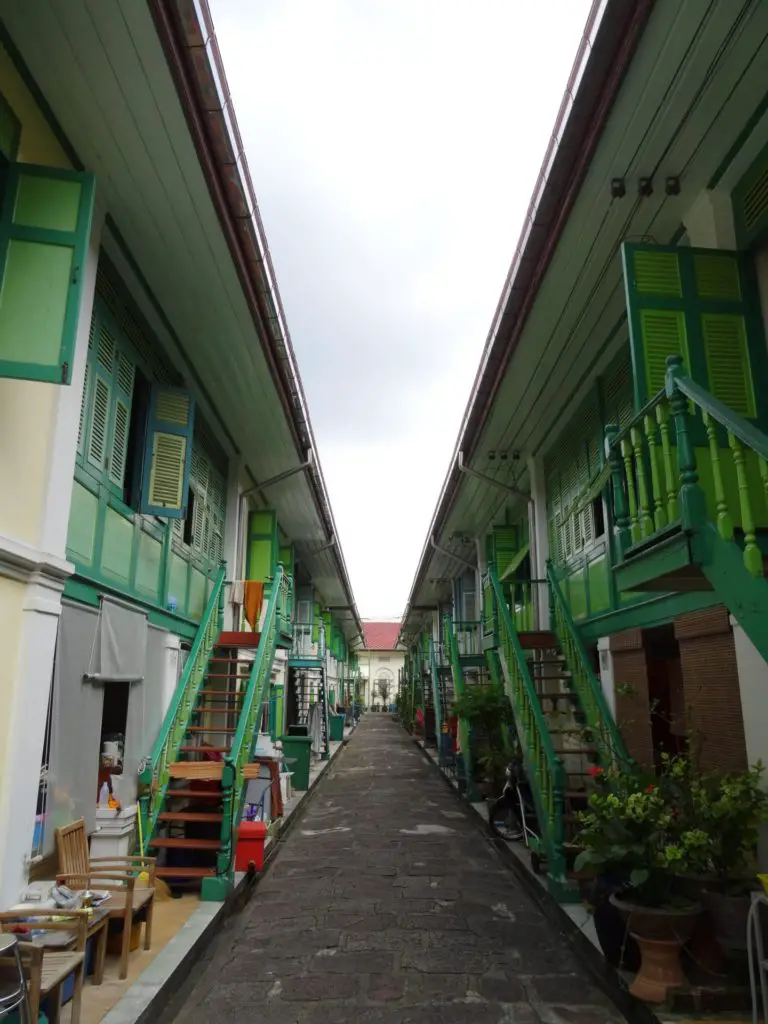
This post may contain affiliate links and I might earn a small commission at no additional cost to you. For more info click here.
Is Dusit Palace currently open to tourists?
Information is a bit scarce on this. As of June 2022, parts of Dusit Palace including Vimanmek Teak Mansion seem to be closed to the public for renovation and while several websites and newspaper articles state that it’s scheduled to reopen soon, no date is given. The interior of Ananta Samakhom Throne Hall can apparently still be visited occasionally, although I couldn’t find any information on which dates.
Make sure to check the status before visiting to avoid disappointment. I’ll leave the rest of the information as it is in the hopes that Dusit Palace will soon again be accessible to visitors in all its splendor and to give you a general idea of the place in case you won’t be able to visit this time.
Is there a dress code for Dusit Palace?
There is indeed – as with most royal properties in Thailand, modest clothes are a requirement to be even allowed into the premises. Wear pants or skirts that cover your knees and shirts with sleeves. Inside the buildings you’re also required to take of your shoes.
Other requirements when visiting Dusit Palace
Also note that there is no photography permitted in most of the palace buildings (which also explains the lack of interior shots in this article). As a matter of fact, you usually have to lock away your bag, camera, phone, etc. before entering any of the buildings.
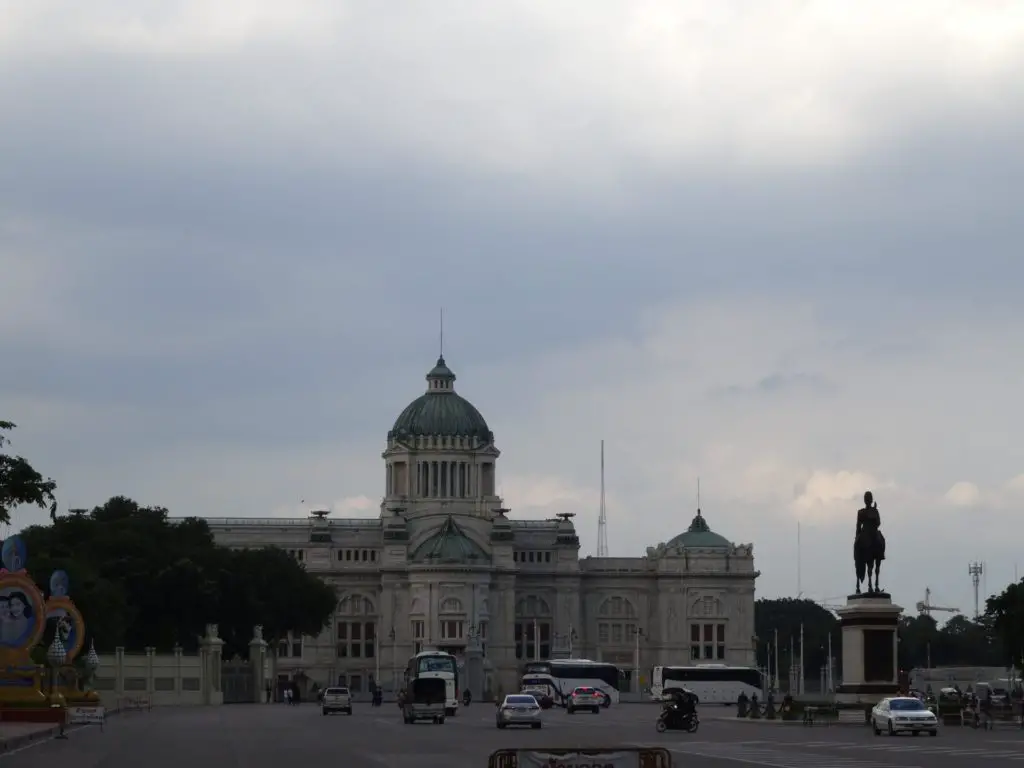
How much does the entrance to Dusit Palace cost?
The entrance to Vimanmek Teak Mansion, which is the main palace building, costs 100฿. Also included is the admission to many smaller buildings dotting the grounds displaying various royal memorabilia.
Notice that the admission to Dusit Palace is free if you have a ticket to Bangkok’s Grand Palace that isn’t older than a week. Visiting the interior of the Ananta Samakhom Throne Hall is a further 50฿ but well worth it for the magnificent decorations and art displays.
Visiting Dusit Palace
This is the star attraction of the area and arguably the main reason to visit the district. Dusit Palace was conceived by Rama V., who was inspired by the regal residences and parks of Western Europe, which he had come across during his travels.
Construction was finished in the first decade of the 20th century and the palace soon became the primary residence of the King, replacing the Grand Palace on Ko Rattanakosin. Apart from the interesting architectural features, the landscaped palace park makes for a pleasant stroll.
Ananta Samakhom Throne Hall
The huge neo-classical Ananta Samakhom Throne Hall was originally built as an audience hall which explains its showy exterior.
The interior can be visited with a pretty useless audio guide that takes more time explaining measurements of rooms and numbers of workers involved than anything pertaining to the history or symbolism of the many beautifully decorated features. The vaulted ceiling is particularly striking, as are the many slender columns and carved marble features along the wall.
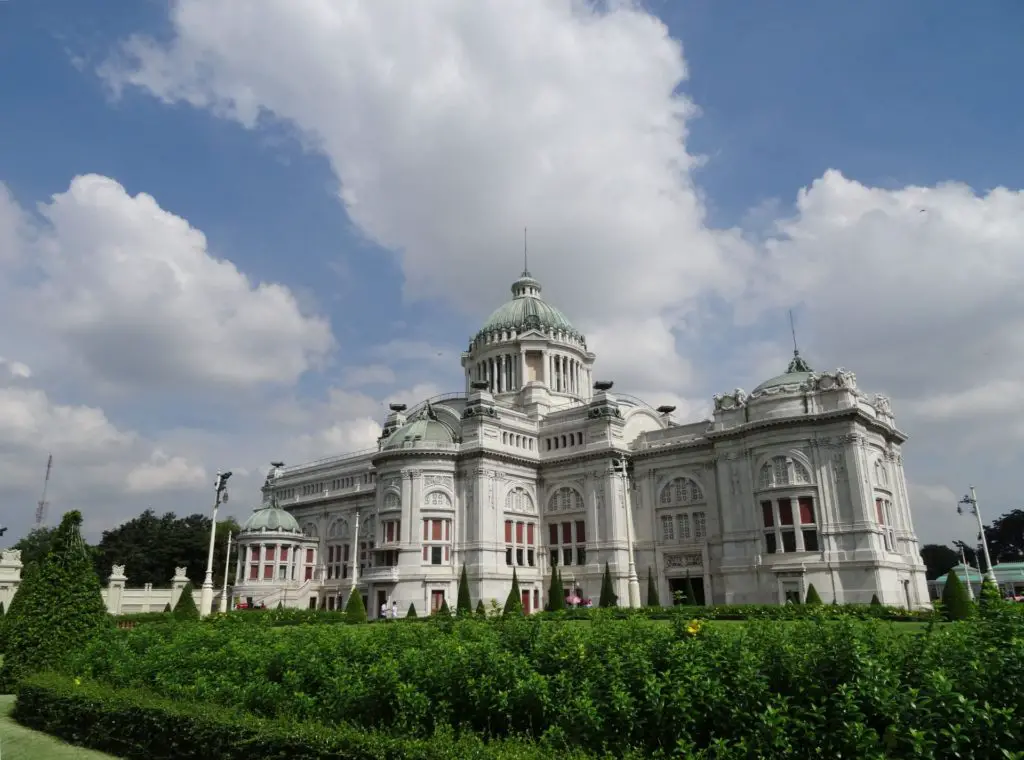
Don’t miss the fantastic frescoes inside the dome depicting the previous monarchs of the Chakri Dynasty. There are also a couple of displays of impressive works of art, including some particularly detailed golden ship models as well as some wonderfully carved wooden screens.
The entrance to the Throne Hall is 50฿ (not included in the general Palace admission) but it’s well worth paying to check out the stunning interior.
Visiting Vimanmek Teak Mansion
While not as showy as the Ananta Samakhom Throne Hall, Vimanmek Teak Mansion, which was originally constructed on Ko Sichang Island and later transported to Dusit, is no less impressive. This is the actual palace, where the kings resided and the many beautiful carved features give it a regal, if slightly more restrained effect when compared to the Throne Hall.
While my guidebook stated that it could only be explored by a guided tour, I was actually allowed to roam freely during my visit. The entire interior is filled with royal memorabilia collected by or gifted to Rama V. during his many diplomatic trips abroad. Also have a close look at the moat surrounding Vimanmek Teak Mansion, as it’s populated by some impressively large monitor lizards.
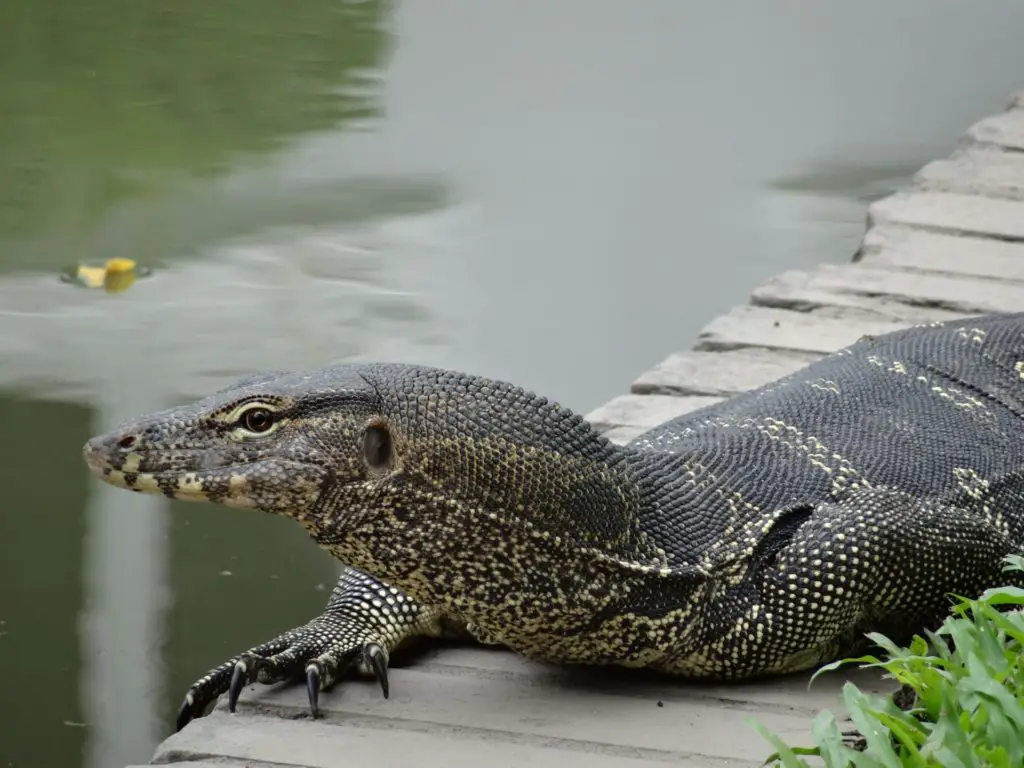
Other palace buildings and exhibitions
There are countless smaller buildings on the grounds displaying everything from photographs taken by the late King Rama IX. to Royal carriages, elaborate clocks and the royal cloth collection. The park itself is pleasant and shady, and a wonderful place for a stroll.
Don’t miss the pretty Abhisek Dusit Throne Hall, built in a style imitating Moorish architecture complete with delicate wooden latticework. It can be found directly east of Vimanmek Mansion.
East of the Abhisek Dusit Throne Hall is the White Elephant Museum which used to function as a stable for the king’s elephants and today contains several artefacts and historical paintings depicting the royal pachyderms.

King Rama V. Statue on Royal Plaza
If you come from the direction of central Bangkok, chances are that you’ll come across this regal equestrian statue anyway, but in case you’ll enter the area from any other direction than south, make sure to circle around to have a look at the figure of the man who shaped Dusit District more than anyone else.
Other things to see in Dusit
Wat Benchamabophit
Arguably the most famous temple in the district, Wat Benchamabophit is also known as the Marble Temple, due to the fact that the courtyard and walls are fashioned out of Italian Carrara Marble, which already used to be popular with the Ancient Romans.
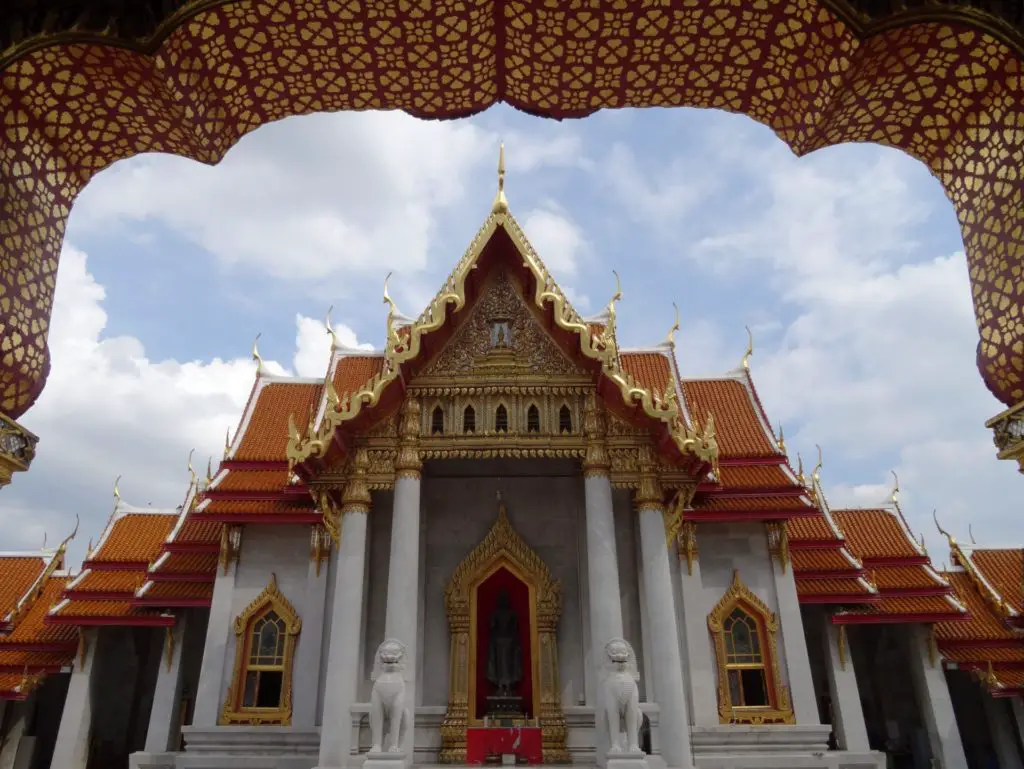
Another distinctly European touch are the stained glass windows. The striking contrast between the rather serene pillars and walls of the central Ubosot (Ordination Hall) and its many-gabled red-and-golden roof makes for quite an impressive appearance.If the building seems familiar to you, you’ve probably noticed its depiction on five-baht-coins minted before 2018. The cloister running around the Ubosot contains 52 images of the Buddha in varying styles.
The nicely landscaped grounds of the temple are a pleasant place to relax for a bit. Wat Benchamabophit is located south-east of the Dusit Palace grounds at the corner of Sri Ayutthaya Street and Nakhon Phathom Street.
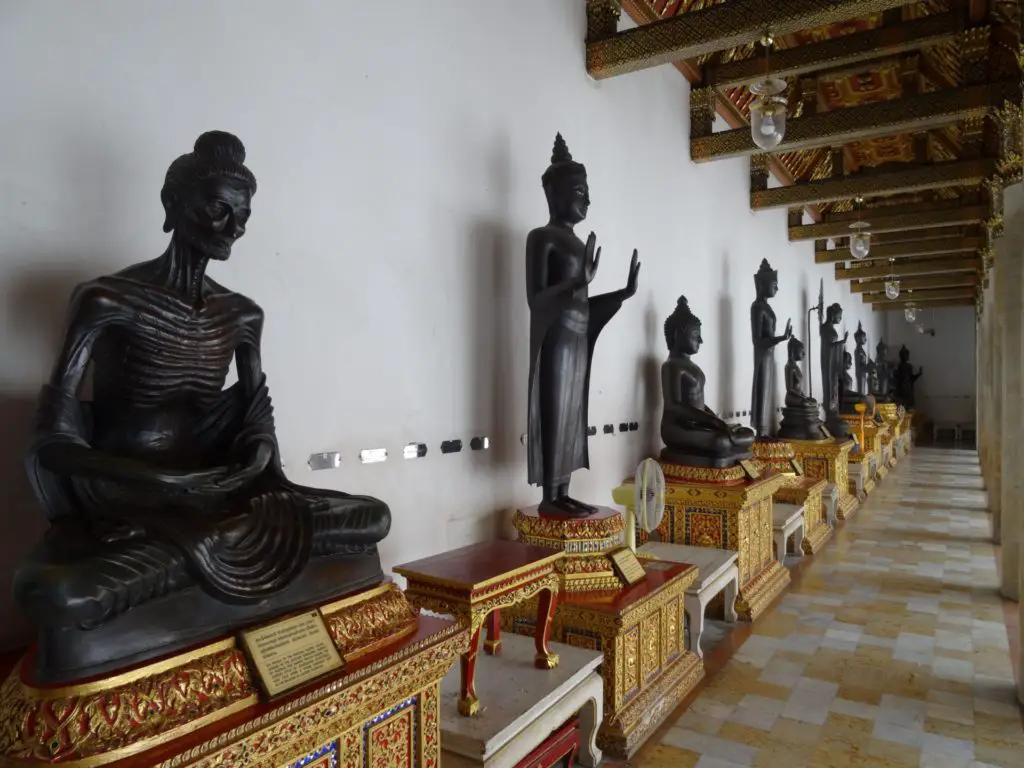
Map of Dusit
This map of Dusit District will give you a general idea of the location of the sights in the area as well as the potential points of entry mentioned below and some nearby accommodation options.
Practicalities
How to get to Dusit
In addition to the ubiquitous taxis and tuk-tuks, there are several ways of reaching Dusit by public transport.One of them would be to take the Express Boat along Chao Phraya River, where the closest debarkation point would be Tha Thewet Pier, from where it’s a ten-minute walk east to Dusit Palace.
The most useful public bus stops are Ananta Samakhom Throne Hall and Wat Benchamabophit. You can check for bus connections from wherever you are in Bangkok here.
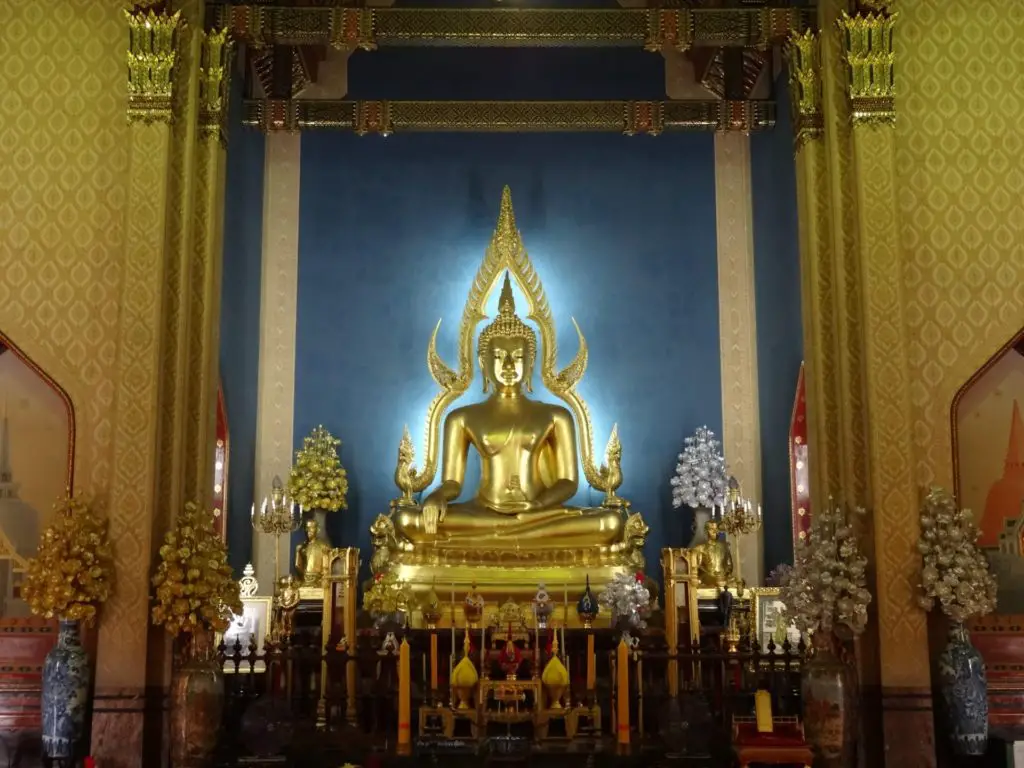
The closest BTS Station is Phaya Thai on the green Sukumvhit Line (which also serves as the western terminus of the Airport Rail Link). From there, you’ll have to get a tuk-tuk or walk north-west along Si Ayutthaya Street for about half an hour.
Where to stay in Dusit
As a district of former royal representation, there are hardly any hotels or guest houses in Dusit and its proximity to the hostel-laden Banglamphu District located to the south-west makes a half-day trip from there the best choice. You can check the map above for potential options.
Where to eat in Dusit
Again, options to eat are limited in the area, so your best bet is to walk about 15 minutes south-west into the Banglamphu Neighborhood, where there are plenty of restaurants.
Otherwise, there are a few stalls along the bigger roads surrounding the Palace area selling snacks and drinks. These are perfectly fine for a quick bite, even if the guy selling me a lemonade told me repeatedly “No Side Effects”, which made me think “The Lady doth protest too much” 😀
See also
Visiting Bangkok’s Grand Palace – Dusit Palace’s older and more famous big brother

